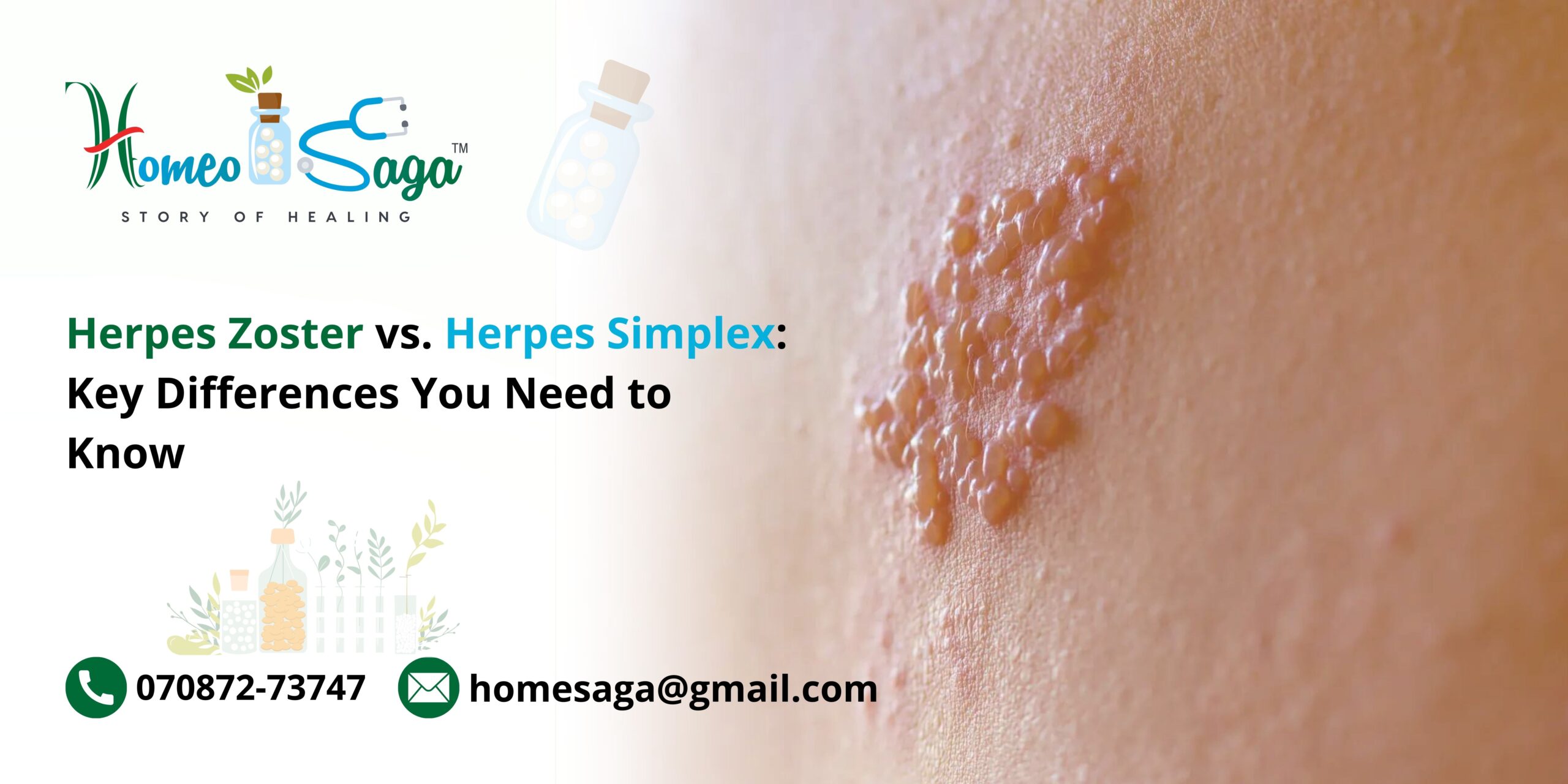When it comes to viral infections, the terms Herpes Zoster and Herpes Simplex are frequently encountered. Though they are both members of the herpesvirus family, they differ significantly in terms of their causes, symptoms, and treatment options. This article will provide a clear comparison between Herpes Zoster and Herpes Simplex to help you better understand each condition.
What is Herpes Zoster?
Herpes Zoster, commonly known as shingles, is caused by the varicella-zoster virus (VZV). This is the same virus that leads to chickenpox. After an individual recovers from chickenpox, the virus can remain dormant in the nerve tissues and may reactivate later, often in older adults or those with weakened immune systems.
Symptoms of Herpes Zoster
Symptoms of Herpes Zoster generally include:
- Early Symptoms: Patients may experience a burning or tingling sensation in a localized area before any rash appears.
- Rash Development: A painful rash typically manifests on one side of the body, characterized by clusters of fluid-filled blisters.
- Accompanying Symptoms: Other symptoms may include fever, fatigue, and a general feeling of unwellness.
The pain associated with Herpes Zoster can be intense and may continue long after the rash has healed, leading to postherpetic neuralgia, a chronic pain condition.
What is Herpes Simplex?
Herpes Simplex refers to two primary types of viruses: Herpes Simplex Virus Type 1 (HSV-1) and Herpes Simplex Virus Type 2 (HSV-2). HSV-1 is primarily responsible for oral herpes, which leads to cold sores, while HSV-2 is generally associated with genital herpes, causing sores in the genital area.
Symptoms of Herpes Simplex
The symptoms can vary based on the virus type:
- For HSV-1:
- Cold sores or fever blisters around the mouth
- Painful lesions inside the mouth
- Swollen lymph nodes
- For HSV-2:
- Painful blisters in the genital region
- Itching or discomfort in the affected area
- Flu-like symptoms during the first outbreak
Key Differences: Herpes Zoster vs. Herpes Simplex
Understanding the differences between Herpes Zoster and Herpes Simplex is crucial for proper diagnosis and treatment. Here are the main distinctions:
- Causative Agent:
- Herpes Zoster is caused by the varicella-zoster virus, whereas Herpes Simplex is caused by either HSV-1 or HSV-2.
- Symptom Presentation:
- Herpes Zoster typically presents as a painful rash localized to one side of the body, while Herpes Simplex results in sores that can appear on the lips (HSV-1) or in the genital area (HSV-2).
- Mechanism of Infection:
- Herpes Zoster occurs due to the reactivation of VZV after a previous chickenpox infection. In contrast, Herpes Simplex can be a primary infection or a recurring outbreak.
- Transmission:
- Herpes Zoster can be contagious, potentially spreading the varicella-zoster virus to those who have not had chickenpox. Herpes Simplex is primarily transmitted through direct contact with active sores.
- Treatment Approaches:
- Antiviral medications like acyclovir are often prescribed for Herpes Zoster to reduce symptoms. For Herpes Simplex, antiviral treatments focus on managing outbreaks and alleviating symptoms.
Prevention Strategies
Preventing both Herpes Zoster and Herpes Simplex is vital for maintaining public health. The shingles vaccine is effective in lowering the risk of developing Herpes Zoster, particularly for older adults. For Herpes Simplex, practicing safe sex, avoiding contact with active sores, and maintaining good hygiene are essential preventive measures.
Conclusion
In conclusion, while Herpes Zoster and Herpes Simplex belong to the same family of viruses, they are distinct in their causes, symptoms, and treatment options. Understanding these differences can empower individuals to make informed decisions about their health.
As you continue to explore the topic of Herpes Zoster vs. Herpes Simplex, remember that consulting a healthcare professional is crucial if you suspect you have either condition. Being informed is an important step in managing your health and well-being.










